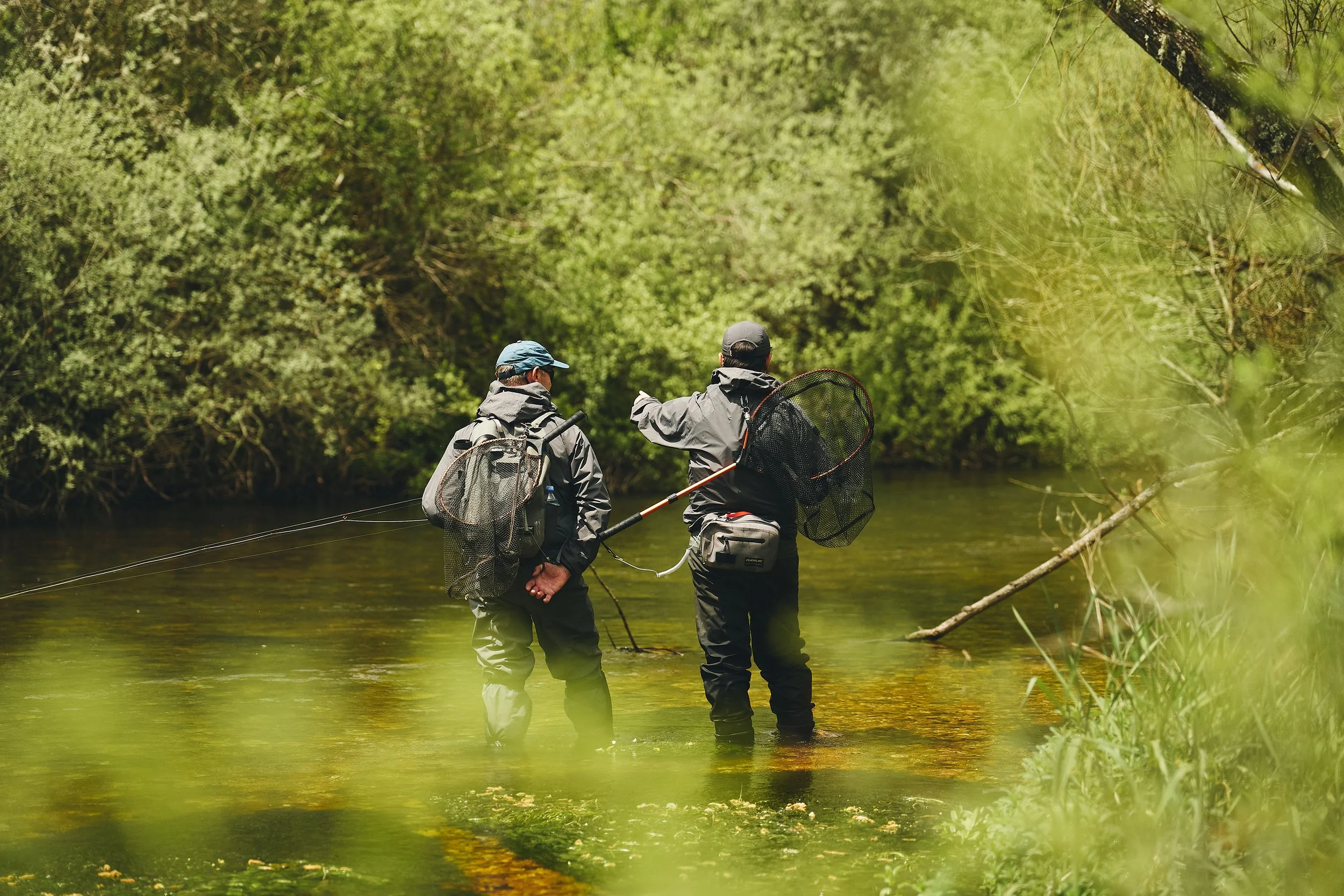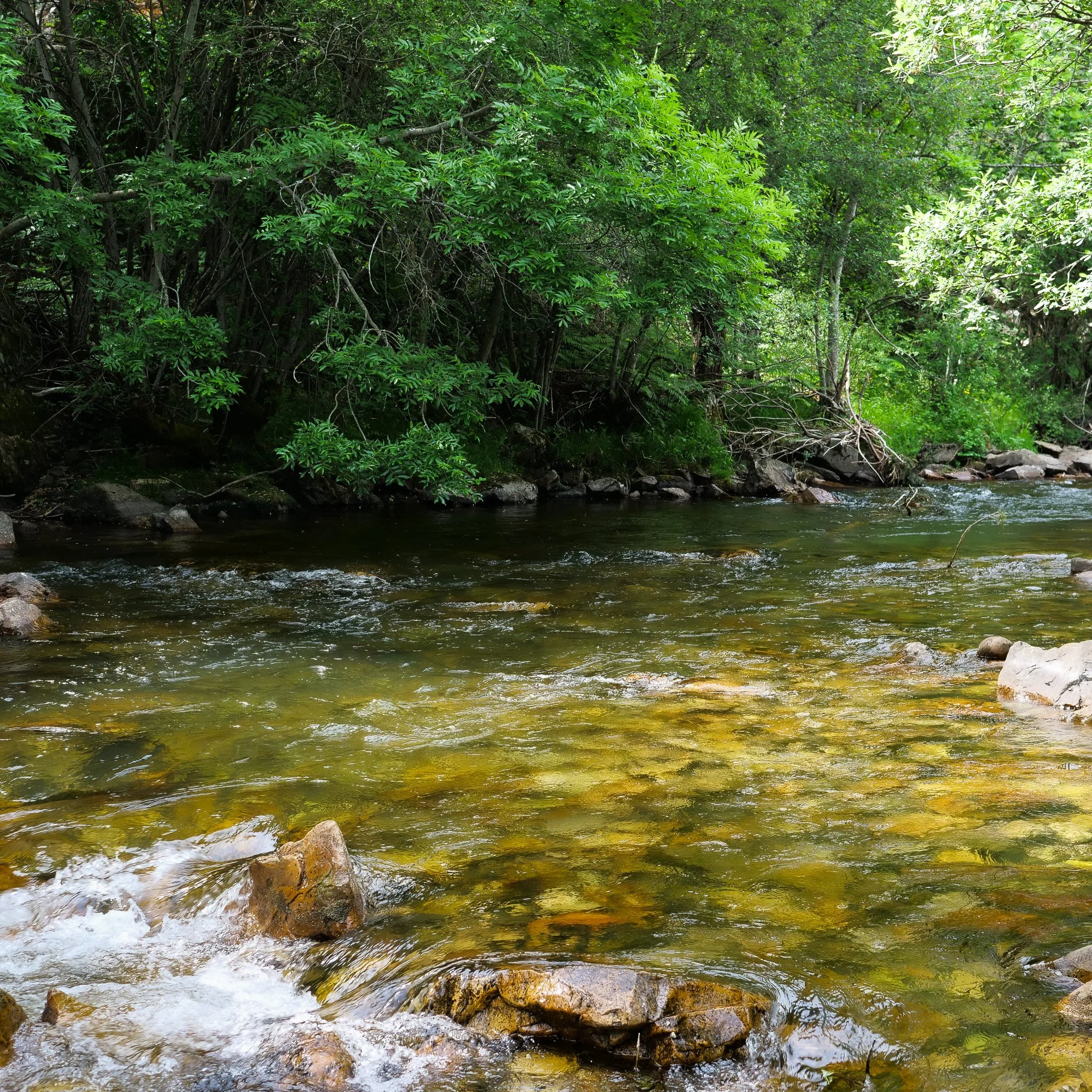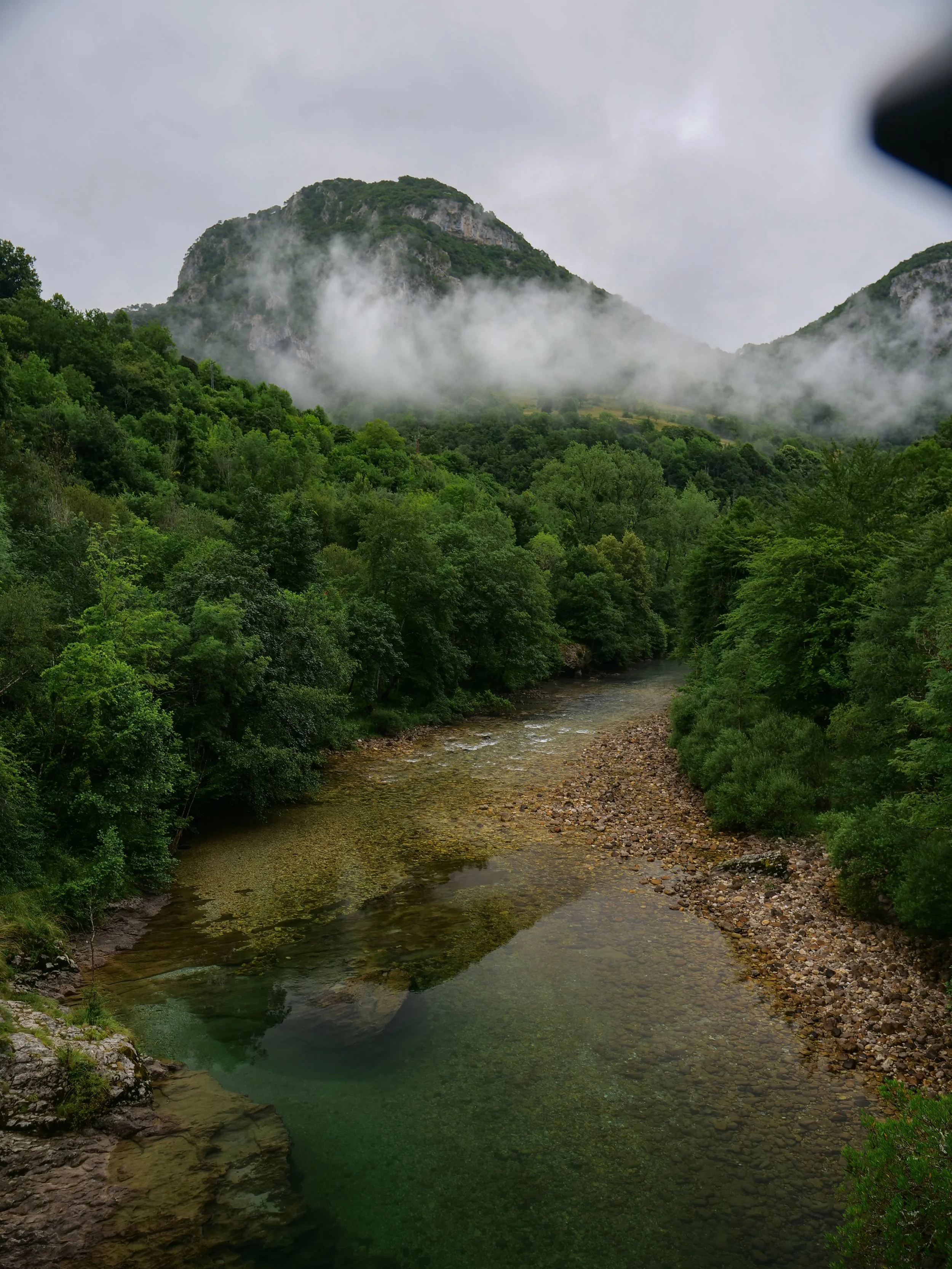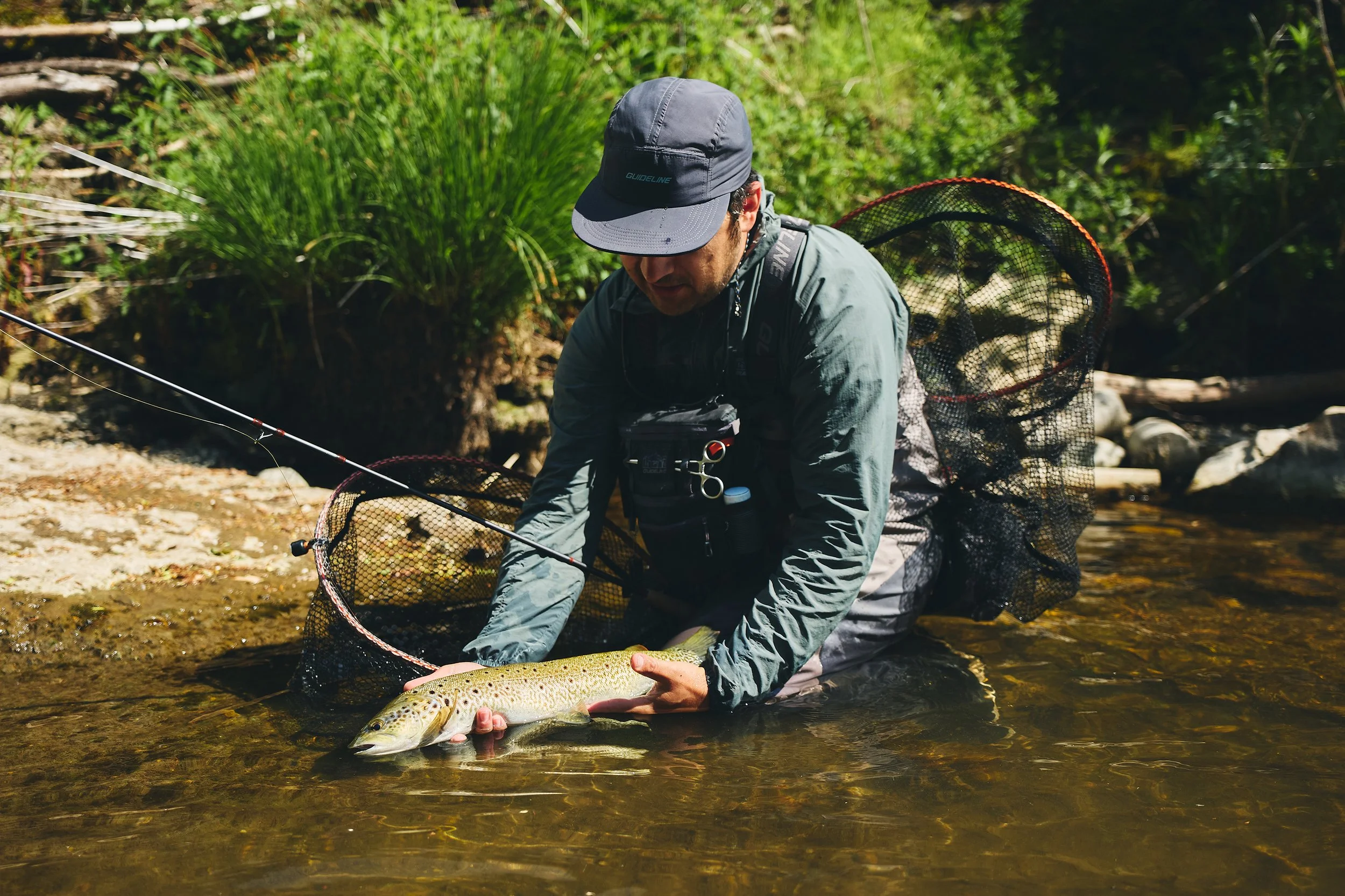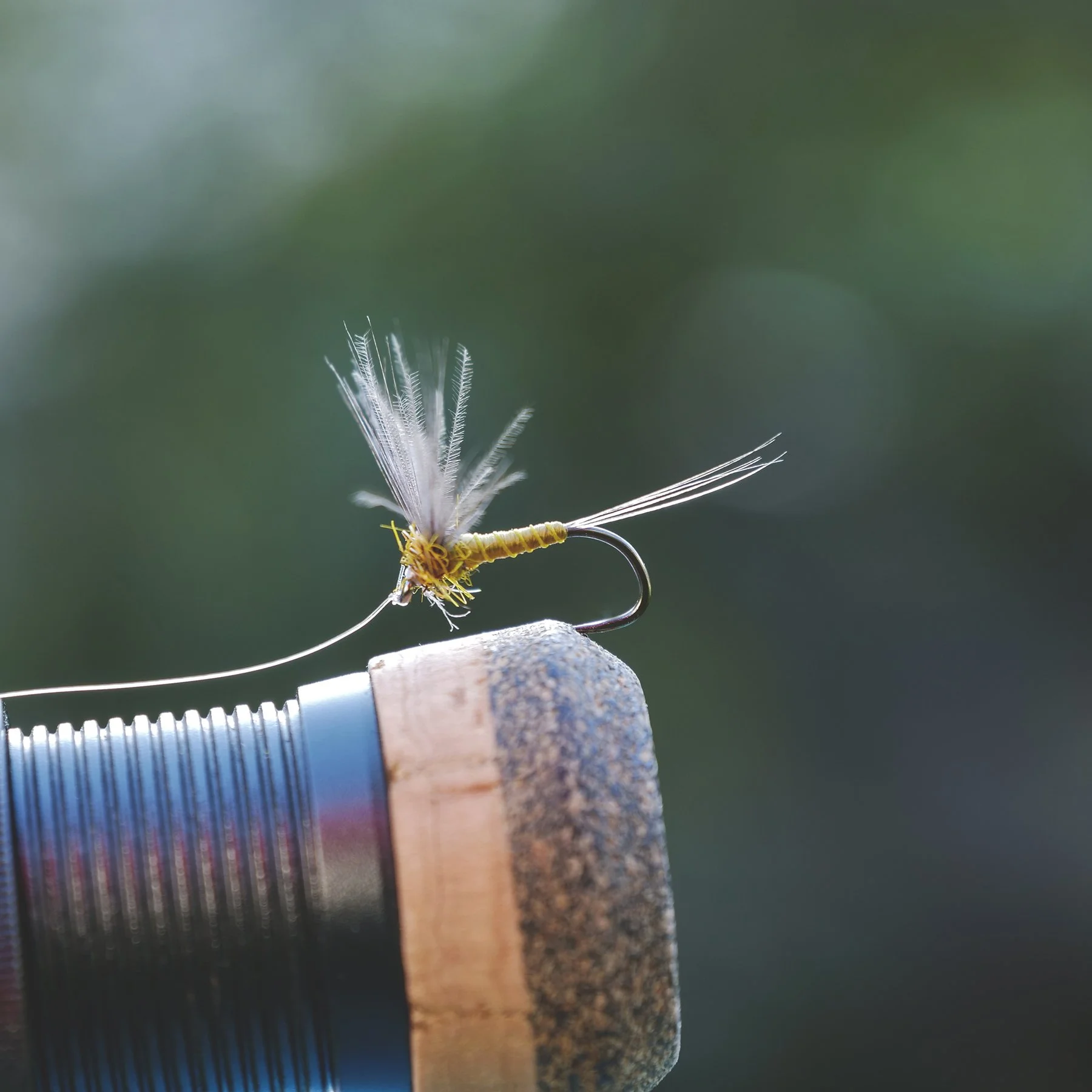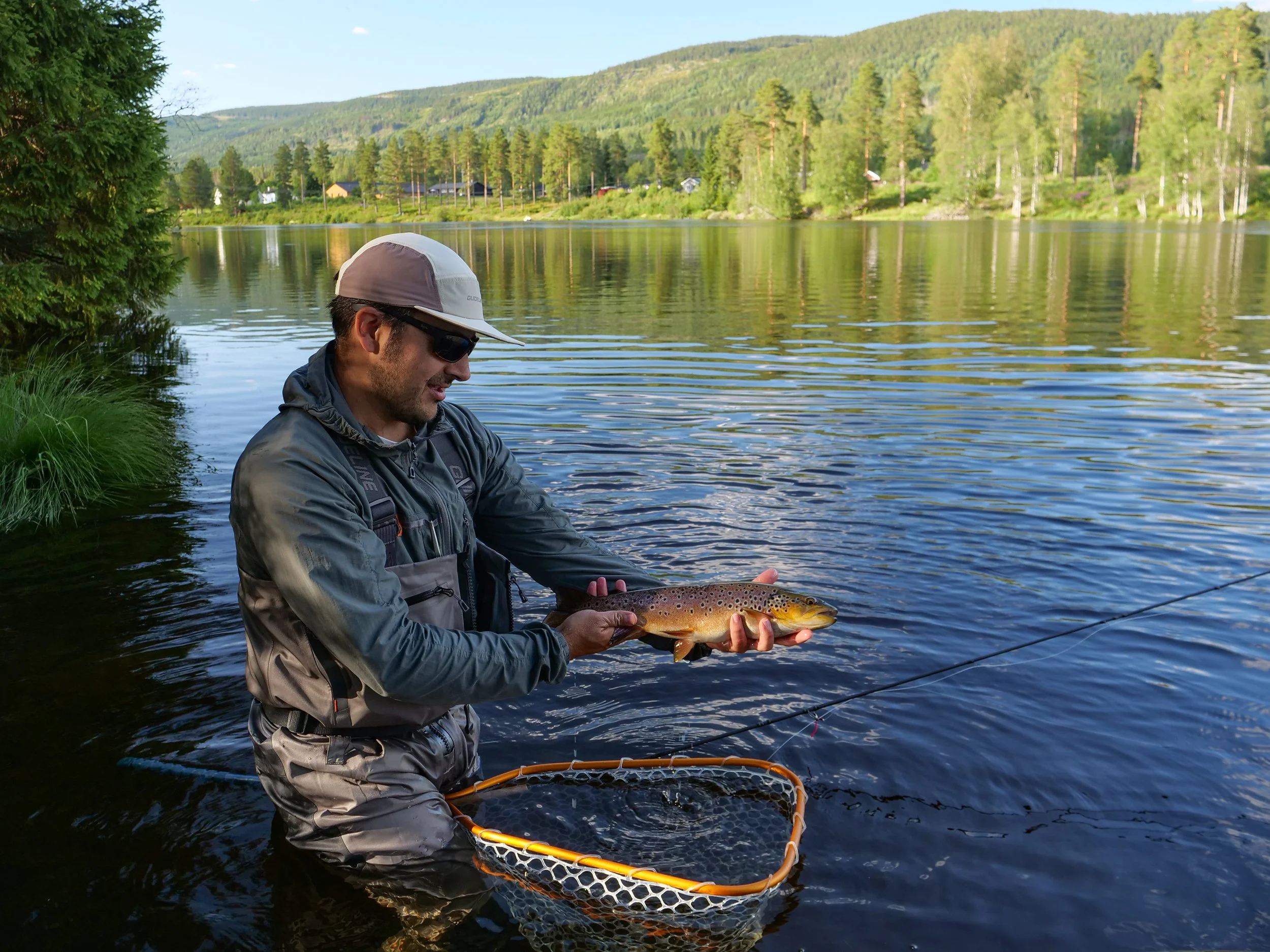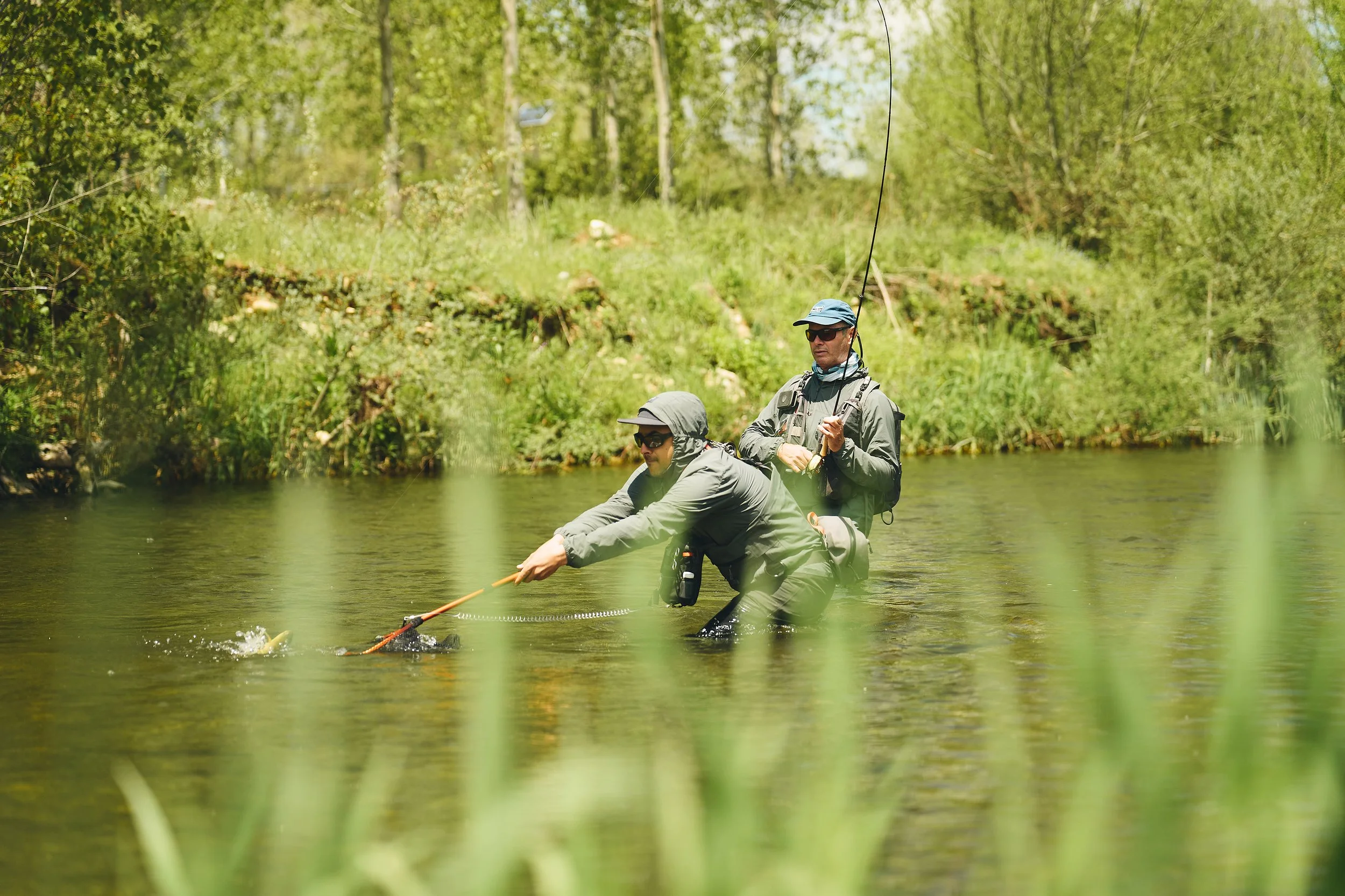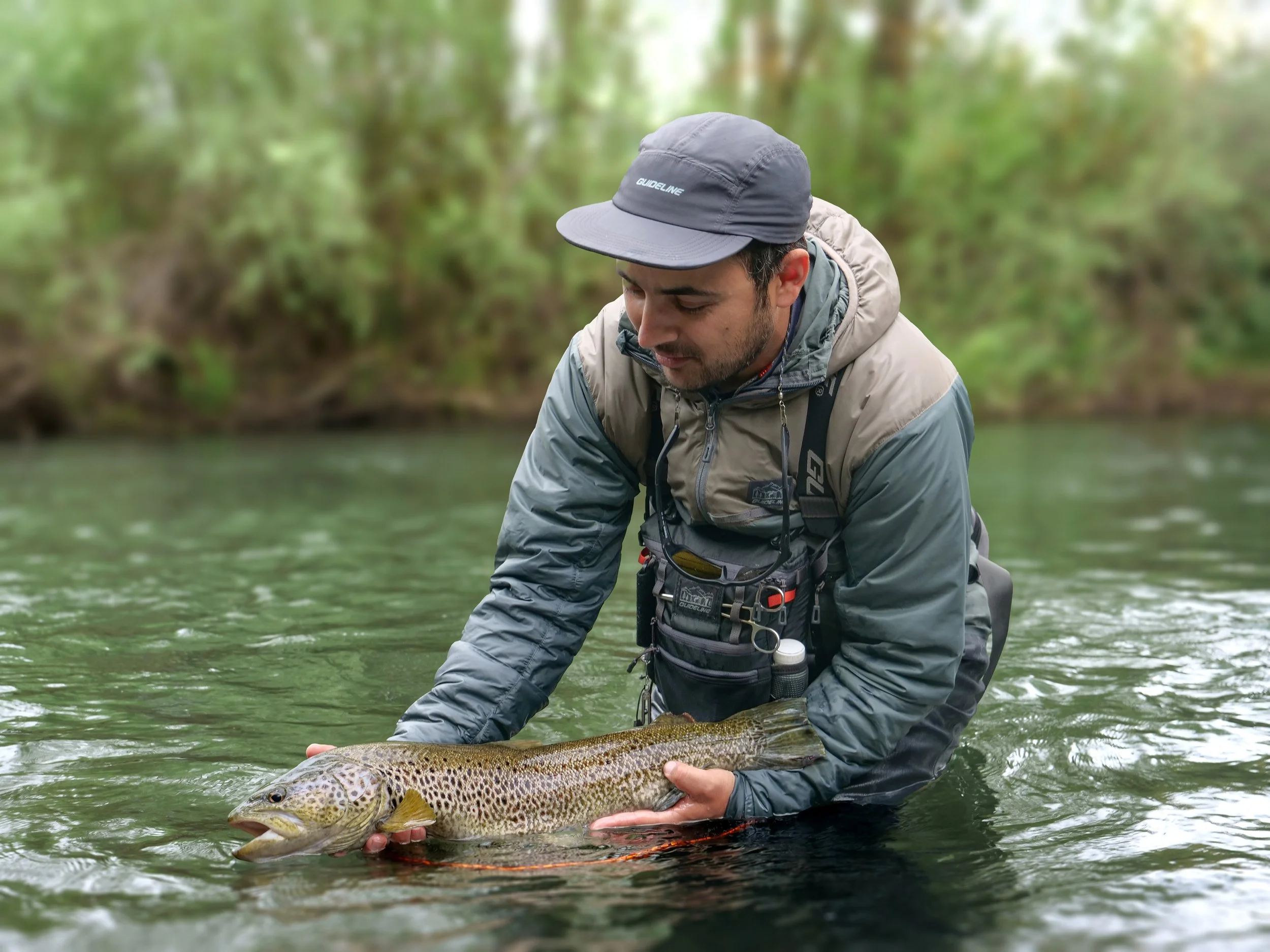
Miguel Blanco Blazquez
1. Choice of equipment: Rods, Reels, fly lines, fly floatant, clothes, glasses and other useful items.
I think the equipment is a very important part of every true fly fisherman. We love our fishing stuff and try to have the best for our fishing. That’s why I have been a tackle maniac and collector for many years. Yes, it’s a bit crazy but on the other hand after trying many things, I know very well what I want for my fishing. I like long and light rods. If you don’t fish small creeks and plenty of trees, long rods are much better to me. These rods allow you to have better presentations and drifts, they are more flexible and they help to fight the fish with thin tippets, you can set the hook faster and with the modern rods, they are super light, so you can fish the whole day easily. I have been using the Guideline LPX Tactical 9’9 2 and 3 wt for the last seasons almost exclusively, but for this 2025, with the addition of the new Guideline NT11 9,6 3# I have my power trio. For the reels, I always ask for three things: they should be light, with a big arbour and reliable. My favourite reel is the GL Fario LW in size 2/4.
For the lines, I’m really picky about them. I prefer predictable lines without complicated profiles. These lines are more intuitive to cast and you have the control. My favourite line when I fish for fast waters is the Guideline CDC, it has a super thin diameter and the drifts in fast water are just amazing. When I fish in bigger rivers and I have to do longer casts, The GL Experience line is my choice. The clothes are one of the more important parts of the equipment. You need to use clothes that make you comfortable to be able to fish for many hours and they should have natural colors such as olive, grey… Polarized sunglasses are a must have for any fishermen, not only to see the fish or the fly, They are also important when you are wading and they protect your eyes against the flies too.
I never go to the river without a clipper, a forceps and a fly floatant.
2. Leader material, build up, length and knots.
The leaders have a complete influence in the cast, presentation and the drift of the fly.
I’m from Spain, and any question about the leader is always a complicated question. For us the leaders are essential and you can find as many leaders as fishermen. Actually for many fishermen, the leaders are the most important part of the set up.
For many years, I have used knotted leaders, with a lot of formulas. Always trying to find “The One” for every fishing situation. It was fun, yes, but it's not practical because the rivers very often change fast and you can lose the north easily just thinking about leaders.
Now I just change the paradigm, I use the same base for everything and then just adjust a bit the last sections. I use the powerstrike taper leader form guideline, the 12’ 3x. This leader have a lot of turnover capacity and I need just a bit less, for that I cut around one foot in the butt and then I tie a microring in the tip and add 50cm of 4x, 65cm of 5x and the tippet, +200cm of 6 or 7x
With this leader, I combine the accuracy from the tapered section with the loooong tip, which creates a lot of slack line close to the fly ready to solve any complicated current and get a good drift.
For the tippet I always use fluorocarbon.
For knots, I use the infinite knot splice different tippet sections, why? It's easy, fast, strong and it never disappoints me.
When I tie the sections over the microring or to tie fly fly I use the double davy knot, why? hum, maybe this could sound familiar: It's easy, fast, strong and it never disappoints me.
3. Approach and stealth
How important it is. I believe you have to cast as close as you can to the fish, so a good approach and being stealthy is super important.
The best way to do it is: keep a low profile (even crawling), slow movement is a must, short steps when you are wading to avoid creating big waves, don’t make too many false casts, use clothes with neutral and natural colors.
As you can see, it’s just using logic. ahh, and the advice: be patient, not to arrive faster you will be more successful, mostly the opposite.
4. Reading the Water
The capacity to read the water made the difference between a good fisherman and a great fisherman. This is something that you can work on. Observation, experience, and knowledge are important, but some people also have an X-factor. Before starting to fishing in any place, it’s very important to pay attention to any detail. The rocks or any obstacle are very important in a river and mostly hot spots. They change the water velocity and give refuge to the fish so they are always around those spots. But there are many more things that you need to think about. It’s possible to learn something new every day and to me, it makes fishing fun. I always try to spend some time looking at the river from the bank before I start to fish, especially if I find a big fish rising. After analyzing the water, you can create the best strategy to catch a fish.
5. Casting ability, Which cast are essential.
Every good fisherman I know is a good caster, and it’s for something. When you are on the river, you have to understand the river as I wrote before, but of course, then you need to put the fly in the proper way and in the right place. Fly casting is a great tool, actually I like to compare the fly casting with a swiss knife, as bigger is your fly casting knowledge more tools have in you swiss knife and more problems you can solve. I mostly fish small rivers with a lot of trees in the bank and I like the roll, switch and spey cast, because they can help you a lot when you don’t have enough room in your back. I also fell in love with the presentation cast a long time ago. For the presentation cast, of course, you have a theory, but they allow you to use your imagination to solve any tricky current or obstacle between your position and the fish. I almost always try to do an aerial mending in every cast, is it necessary? maybe not but I have to admit I'm addicted. hahaha
6. Entomology, what should we know?
I’m a former biologist. My formation gives me another perspective about fishing and it helps me a lot about entomology. Is it necessary to become an expert to be a good fisherman? absolutely not. but, could you be a great fisherman without any knowledge about entomology? probably neither.
So, what do you need to know? you need to know clearly the difference between the big families: Upwings, Caddis, Stoneflies, Midge and Others: How do they live? Where do they live? When do they be active? The hatch timing? …
The easy thing is you can read a lot about it, and then it is not difficult to go to the river and prove it. Good advice is spent sometimes just looking for insects, not only focusing on fishing.
You won’t be losing your time but investing it in good fishing.
7. Rise forms, Can they tell us something?
Yes, of course they do. We could write a book about that.
How rise the fish could give us a lot of information about what they are feeding. Adults? emergers? nymphs? Every phase of the insect's cycle of life has its own kind of rise. I love when the fish are feeding on nymphs very close to the surface and you only see the tail of the fish hitting the surface. You can know if they are feeding with one kind of insect or not.
But the rises don't give you only info about what the fish are feeding. You could know how active the fish are and much more important, where the fish are located and it’s very useful for the right approach. A good tip is try to count the time interval between rises, some fish rise with regular intervals, so try to know how many seconds the fish need to rise again and put your fly with the right timing!!
8. Fly Selection, size, shape, materials, which flies are essential, favorite fly.
I’m an enthusiastic fly tier, I select my flies very carefully and I try to use the logic when I need to pick a fly. My flies are always very minimalist and functional. I use CDC in almost all my dries and this is not a fancy decision, It’s just thousand of hour in the river with my eyes open wide, and CDC flies work really well. My favourites flies are mostly emergers, like CDC bubble or my beloved Moliv Emerger, but very often I use simple dun’s patterns like my M&M, CDC caddis or Fly ants.
9. Presentation and drifts.
This is the key for dry fly fishing. Where I mostly fish, the trout are very sensitive to the drift, if the fly makes any unnatural movement, the fish will refuse the fly for sure. Trying to have success, I always try to create a lot of slack line, especially on the leader, as close as I can to the fly. I could do it in many different ways but if I can choose a cast to get a good presentation, I always try to cast upstream in 30 to 45 degrees creating a curve cast due a low energy stroke. In this way, the leader collapses over the water leaving the fly below the leader. I call it Upstream Downstream cast. Why? I’m casting upstream, but the fly arrives at the fish like in a downstream cast, I mean, the fly is the first thing the fish can see. Also having the leader above the fly, even if the current pulls the leader, it can’t have any influence over the drift.
10. Upstream or downstream
Both, of course.
I fish most of the time upstream, just because I like to walk upstream the river. Fishing upstream is also a great option in fast waters because it allows you to have a better approach to the fish and also you have more chances to cast. You can lift the line after it overpast the fish and don’t disturb it.
In slow waters, or when you have tricky currents, very often downstream casts give you a better presentation but after the fly pass over the fish, very often, you can’t lift the line far from the fish position and it could be a problem.
So, when I need to make a cast for a fish, I try to make a balance between pros and contras for Upstream and downstream cast and I choose the one who gives me a better balance. If I have doubts about which one is better, I would try first an upstream cast for sure.
11. Fish fighting
Fast! That's the word. I always try to put the fish on the net as soon as possible. It’s a compromise with myself. The shorter the fight the bigger are the possibilities to survive for the fish. That’s why I try to use the thicker tippet that I can (that is usually thin) but there are much more. It’s important to be clever when you are fighting a fish. Try to anticipate what the fish wants to do and don’t let it do it. A good piece of advice is: Run!! if you can go faster to the fish and be always below the fish, the current will help you a lot during the fight!


